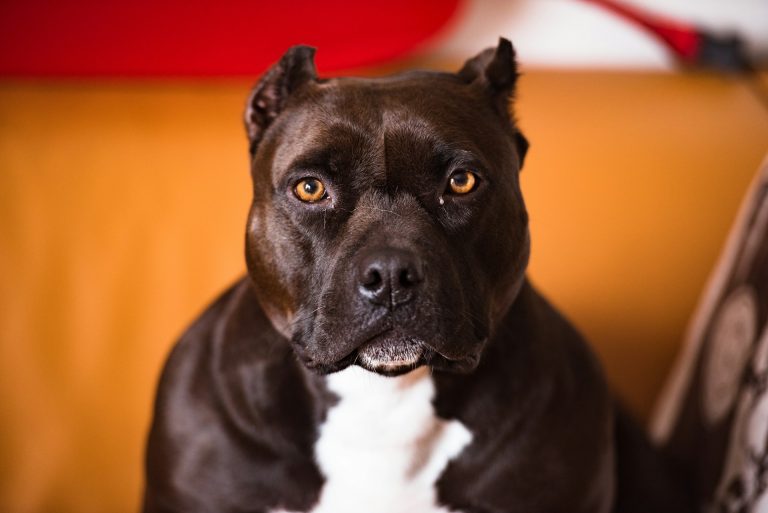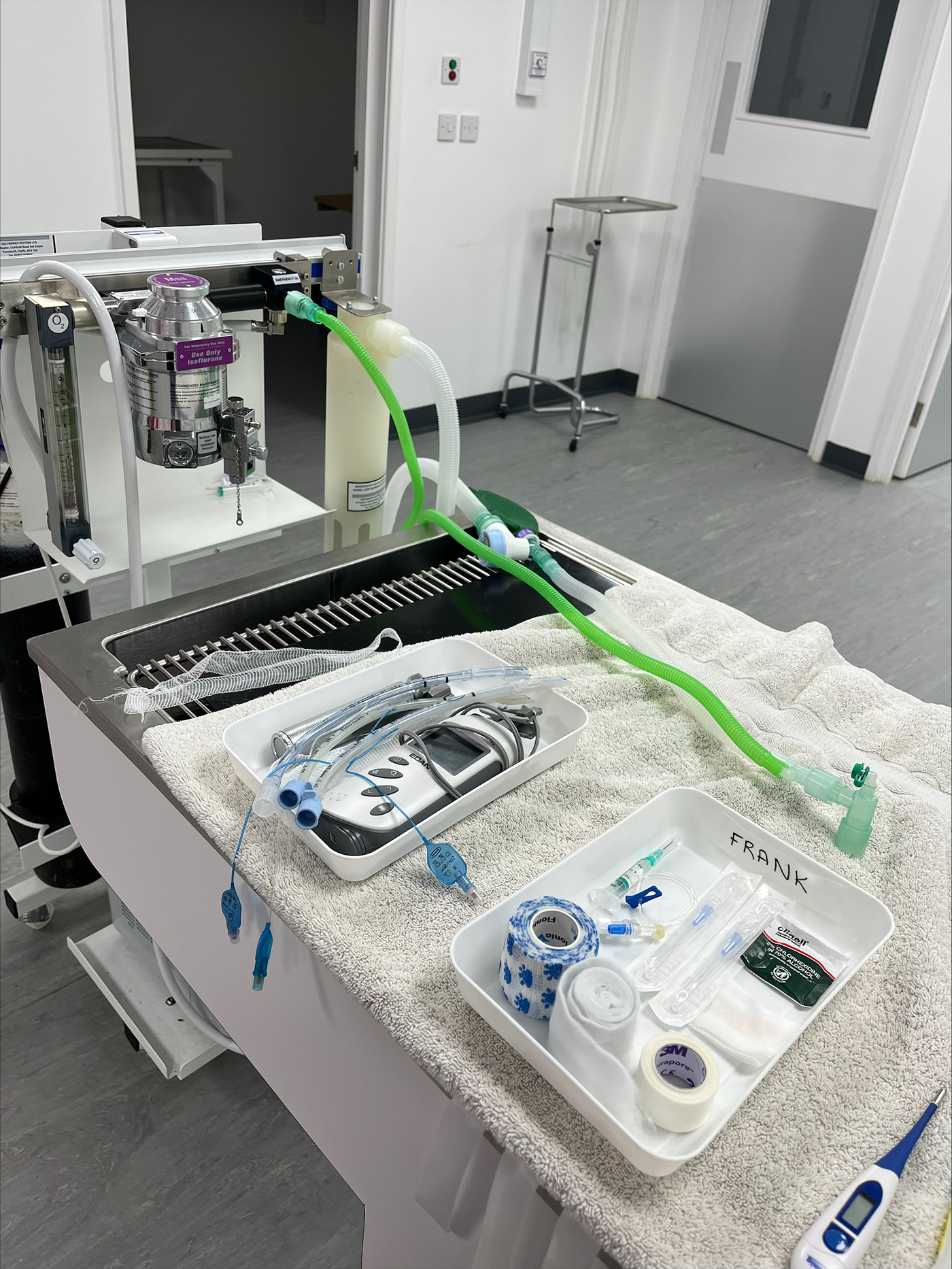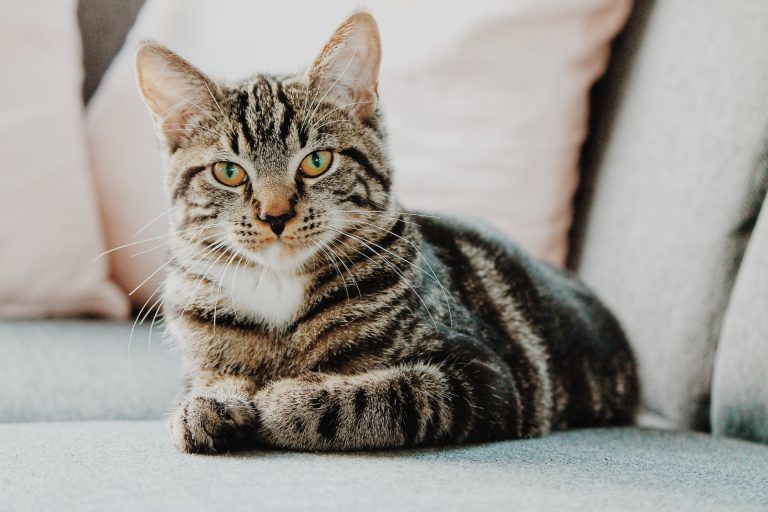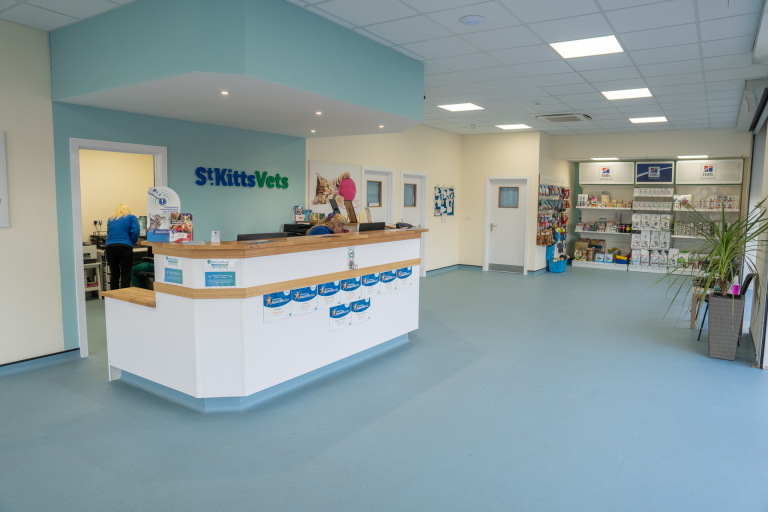
We understand that the recent announcement about the XL Bully ban has been very worrying – both for owners and the wider animal lover community.
To help you prepare for the new laws, we have put together a guide to the key requirements, exemptions and important dates that you need to be aware of.
If you’re an XL Bully owner and need support or have any questions, please get in touch with your local practice, who are always here to help.
At the end of October 2023, the UK government announced its ban of the XL Bully breed in response to a series of serious and, in some cases, fatal attacks. This means they have been listed under the Dangerous Dog Act 1991, alongside previously banned breeds including the Pit Bull Terrier, Japanese Tosa, Dogo Argentino and Fila Brasileiro.
To support owners in adapting to the new laws, the changes will come into force in three stages, which we will outline in our important dates section below.
One of the most pressing questions currently for owners is how to know if a dog would be classified as an XL Bully ‘type’. The government has put together official guidance to help define this, with some of the characteristics mentioned including (but not limited to):
For the full list of characteristics, read the government’s official guidance here.
If you remain unsure if you have an XL Bully, the guidance is to prepare for compliance with all new requirements for this dog type, including for puppies that may grow up to be an XL Bully dog. If you would like extra guidance please speak to a member of our highly qualified team.
From 31 December 2023 it will be against the law to:
From 1 February 2024 it will be a criminal offence to own an XL Bully dog in England and Wales unless you:
The guidance recommends that owners should start to train their dogs to wear a muzzle when in public and to walk on a lead before 31st December 2023. It can be tempting to skip muzzle training, but this will likely scare your dog and make it an uncomfortable experience for them.
Choose a correctly fitting muzzle
The muzzle should allow your dog to breathe freely and comfortably.
Here are some top tips on getting the right fit:
We find the best way to approach muzzle training is:
If you own an XL Bully, continue caring for them as normal. We know that it’s a worrying time, but the best thing you can do for yourself and your dog is to not panic.
The licensing process will require them to be neutered and microchipped, so it’s important to make sure you are prepared for this in advance. When the ban comes into force, you’ll then need to apply for a Certificate of Exemption to keep your dog and comply with the rules around banned breeds.
The teams at your local St Kitts Vets practice are on hand to provide support and help answer any questions you may have. We can also provide neutering and microchipping to ensure your dog is compliant before the new law comes into place. Please contact us to discuss booking an appointment.
St Kitts Vets Hartley Wintney: 01252 844044
St Kitts Vets Basingstoke: 01256 844944
Crookham Park Veterinary Centre: 01252 913990
Firgrove Veterinary Centre: 01252 877799

This November, St Kitts Vets are joining together with the British Veterinary Association (BVA) for their Antibiotic Amnesty campaign. We are pleased to be accepting out-of-date and unused antibiotics that were previously prescribed for your pets, so they can be disposed of safely.
Following the success of the inaugural campaign in 2022, the collaboration is returning for its second year to prevent the chance of out-of-date veterinary antibiotics being used, or causing harm if they are disposed of incorrectly.
Many people throw away unused veterinary antibiotics in household waste, or down sinks and toilets, without realising that this can have a negative impact on water quality, aquatic life and wildlife. Leaving leftover or expired veterinary antibiotics lying around also increases the chance of them being used or consumed.
The issue of antimicrobial resistance (AMR) has grown in recent years, with antibiotic residues being detected in rivers around the world. Use of leftover or expired medication can also increase the risk of AMR if used for the wrong indication and potentially delay a diagnosis.
If you have any questions about Antibiotic Amnesty, please contact your local St Kitts practice directly:
St Kitts Veterinary Centre: 01252 844044
Basingstoke Veterinary Centre: 01256 844944
Crookham Park Veterinary Centre: 01252 913990
Firgrove Veterinary Centre: 01252 877799

Earlier this week, we shared a blog post on the signs of eye problems in dogs, as we look to support TVM’s annual Pet Eye Health Awareness Week (18th – 24th September 2023). Continuing our series, next up we’re looking at signs of eye problems in cats, highlighting common symptoms and conditions to be aware of.
If you notice a change in your cat’s eyes, contact your local vet for an appointment.
Eye infections are one of the most common eye conditions in cats, which can be caused by bacteria or viruses. If your cat suffers from frequent eye infections, they might have an underlying condition, such as cat flu.
Eye ulcers are a wound on the surface of the eye (the cornea). If left untreated, ulcers can lead to loss of an eye.
Conditions such as entropion, where the eyelids can turn inwards and rub the eyeball, are quite common and can cause infections, pain and inflammation.
Cataracts, the clouding of the lens, is much less common in cats than in dogs, but does sometimes occur. Cataracts in cats are usually caused by another condition such as an injury – or glaucoma, uveitis or lens luxation (all of which we will come onto shortly).
Retinal detachment is where the thin layer of cells (the retina), separates from the back of the eye, causing loss of vision. Retinal detachment is often due to high blood pressure and is common in cats with hyperthyroidism and kidney disease.
Uveitis is when the coloured part of the eye (the iris) and the area around it can get all inflamed. If you suspect this with your cat, it is best to get it checked out and treated as soon as possible.
Growths can occur in, around and behind the eye. It’s important to get any new lumps checked by your vet immediately, so your pet can receive vital, and often life-saving, treatment.
Lens luxation is when the lens comes out of position, often because of another underlying condition, which can cause your pet discomfort. If not treated it can lead to the loss of vision.
Glaucoma is a painful condition caused by the build-up of increased pressure inside the eye. If left untreated, unfortunately glaucoma can quickly lead to blindness.
If you have concerns about your cat’s eyes, contact your local St Kitts practice.
St Kitts Vets Hartley Wintney: 01252 844044
St Kitts Vets Basingstoke: 01256 844944
Crookham Park Veterinary Centre: 01252 913990
Firgrove Veterinary Centre: 01252 877799

To support TVM’s annual Pet Eye Health Awareness Week (18th – 24th September 2023), we thought it was the ideal opportunity to raise awareness of eye problems in dogs, so that you’re aware of the signs to look out for. Early diagnosis and treatment is key in most cases – it could prevent vision loss or help to detect an underlying medical condition.
If you notice a change in your dog’s eyes, contact your local vet for an appointment.
Cataracts occur when the lens inside the eye becomes cloudy. Over time, cataracts can reduce vision and, if left untreated, can often lead to blindness.
Cherry eye is a condition where the gland inside the third eyelid protrudes. It looks like a small, red cherry in the corner of the eye, which causes inflammation and discomfort.
Dry eye is a condition that stops the eye producing enough tears. This can cause discomfort, redness, corneal damage and increase the risk of infections.
Eye infections can be caused by bacteria or viruses. If your dog regularly suffers from eye infections, it is possible there could be an underlying cause, such as dry eye, which will need investigating.
Eye ulcers are a wound on the eye’s surface. Treatment is required to help them heal as, if neglected, eye ulcers can lead to the loss of an eye.
It is not uncommon for dogs to have eyelashes that grow in the wrong direction, from the wrong place, or even to develop a whole extra row of them. Any eyelash that rubs on the surface of the eye will cause irritation.
Inward or outward turning eyelids, known as entropion and ectropion, respectively, can cause inflammation, pain and infections.
Glaucoma is characterised by increased pressure inside the eye. This painful condition can rapidly progress to blindness, if not promptly treated.
Lens luxation refers to the displacement of the eye’s lens from its normal position. It can cause discomfort and if untreated, the loss of vision.
Masses and tumours can form behind, in or around the eye. It’s crucial to get any new lumps examined by your vet immediately.
Pannus is an inflammation which is caused by an immune system problem, which results in small lumps or growths to form on the surface of the eye, affecting the dog’s vision.
Uveitis is the inflammation of the iris, the coloured part of the eye, and the structures around it. This condition can cause discomfort and potentially lead to vision problems if left untreated.
If you have concerns about your dog’s eyes, contact your local St Kitts practice.
St Kitts Vets Hartley Wintney: 01252 844044
St Kitts Vets Basingstoke: 01256 844944
Crookham Park Veterinary Centre: 01252 913990
Firgrove Veterinary Centre: 01252 877799


As we look to streamline processes and improve the service we provide to our clients, we are happy to share that we have now introduced a new electronic reminders system.
The new solution will allow us to send timely personalised messages via text and email, replacing our current postcards, to remind you of when your pet is due for treatments and appointments. These messages will prompt booking to help you keep on top of your pet’s care, including a link to our online booking platform and a number to call your local practice, for those who prefer to arrange appointments this way.
Going forward, we will also be introducing reminders for other services, such as dermatology and acupuncture.
Going digital will help us to limit our paper consumption and reduce our overall carbon footprint. It will also free up time for our team to focus their time and effort on continuing to deliver gold standards of service to clients and care to your pets.
To ensure you don’t miss out on receiving reminders and important information about your pets, please update your contact details with your local practice.
Please note: We understand how important your data is to you, which is why our new system is designed to comply with all Data Protection legislation, including GDPR. Only the data that is needed to send our reminder communications will ever be read.

Here at St Kitts Vets, we’re working closely with the team at ProVetSurg to provide clients with a cost-effective assessment and treatment pathway for brachycephalic obstructive airway syndrome, otherwise known as ‘BOAS’.
BOAS is the name given to a group of conditions that affect the airways of some breeds of dogs and cats. It predominantly affects flat-faced breeds – those with shorter noses – due to the obstruction of free flowing air through the nose and throat. Dogs such as Pugs, French Bulldogs and British Bulldogs can all be affected by BOAS, along with cats like Persians and Exotic Shorthairs.
BOAS can be caused by a number of factors, including:
The signs of BOAS vary and can range in severity, including:
To begin the process, a detailed pre-operative consultation will take place to discuss your pet and assess the severity of BOAS. An exercise tolerance test is usually performed as part of this assessment. Further investigations following admission will include X-rays of the head and neck and examination of the larynx and upper airway under anaesthesia. In some cases, a CT scan may also be recommended.

If surgery is considered appropriate for your pet, a detailed plan will be put in place to minimise the risk of complications and promote a speedy recovery. This includes thorough anaesthesia and recovery plans, along with contingency plans for patients needing additional care.
The recovery from anaesthesia and the hours immediately following BOAS surgery are very important so we ensure all patients are provided with quiet and calm surroundings to limit stress for recovery. They will be monitored continuously by our experienced team before being discharged to recuperate at home once stable.
BOAS cases will be treated at our Crookham Park practice, with surgery performed by Soft Tissue Surgeon, Ana Murta MSc, PgC(SAS), MRCVS, from ProVetSurg. Ana is an RCVS Advanced Practitioner in Small Animal Surgery.
We are delighted to be offering BOAS surgery to both registered clients and non-registered clients. For registered clients, please get in touch with your local St Kitts branch to book an appointment.
All referrals can be referred directly to our Crookham Park practice. Call our team on 01252 913990 or email info@crookhamparkvet.co.uk to discuss a case.

Earlier this year, a survey by the British Veterinary Association (BVA) found that vets across the country are seeing increasing numbers of pets with issues that could’ve been prevented or minimised if they had been seen sooner.
According to their Voice of the Veterinary Profession survey, 99% of vets had seen pets in the last year who should’ve been brought in for treatment earlier – a significant increase of almost 20% since 2018. When asked about the reasons for this, 91% of vets found that financial reasons were a key factor.
As part of ITV Meridian’s coverage of the findings, vet Helen Hulley and the team at St Kitts Vets Basingstoke welcomed film crews to the practice to discuss our own experiences.
If you didn’t manage to catch the news when it first aired, here is the clip of the feature!
The BVA’s study highlights the importance of regular check-ups and preventative care to help keep your pets happy and healthy, while keeping veterinary costs to a minimum. There are many simple and affordable things you can do, including:
At St Kitts Vets we offer our Pet Healthcare Plans, which are designed to help spread the cost of routine and preventative treatment with simple monthly payments. Many of the steps above are either included free or at a discount for members.
Another great way to ensure you’re there for your pet when they need it most is by having a suitable pet insurance policy in place. Pet insurance can be used for most illnesses and injuries and will mean you don’t have to worry about any unexpected vet bills.
We offer 4 weeks FREE insurance to all new registrations (T&Cs apply). Please talk to our team to find out more.
If you’d like to chat about your pet with our team, please give your local practice a call.
St Kitts Vets Hartley Wintney: 01252 844044
St Kitts Vets Basingstoke: 01256 844944
Crookham Park Veterinary Centre: 01252 913990
Firgrove Veterinary Centre: 01252 877799

With summer days upon us, you can expect to see a hive of activity from bees and wasps, who thrive in the warmer weather. Although this is great for the ecosystem, it can cause problems if your beloved pet gets stung.
So let’s explore the signs and what to do if your dog is stung by a bee or a wasp.
Being stung by a bee or a wasp can cause your dog some discomfort and distress, but the pain should ease and go away after a short period.
If your dog is allergic to the bee or wasp sting, it could result in a severe reaction, or even death, if left untreated. Symptoms include:
If your dog is showing any signs of an allergic reaction, you should contact your local branch immediately to arrange emergency treatment.
Always check with your vet before administering any over the counter antihistamines, as the wrong dose can be fatal. Your vet will advise on the right drug and quantity for your dog’s size and weight.
If your dog has been stung and the sting is still embedded in their skin, you may need to bring them in to your local vet to have it removed. Our team will be able to ensure the venom sac is removed correctly, to prevent further irritation.
After having the sting removed, it is likely that there will be some swelling and localised pain which can be alleviated back home with a cold damp cloth on to soothe the area.
It is likely that your dog will be feeling agitated, so try to keep them (and yourself!) cool and calm.
An allergic reaction may develop during the first few hours of your dog being stung, so remember to stay alert for any signs.
If you suspect your dog has been stung, contact your local St Kitts practice for expert advice and treatment:
St Kitts Vets Hartley Wintney: 01252 844044
St Kitts Vets Basingstoke: 01256 844944
Crookham Park Veterinary Centre: 01252 913990
Firgrove Veterinary Centre: 01252 877799

Cats love to roam and explore. It’s in their nature. So, no matter how hard you try, there will always be the risk that they may struggle to find their way home.
This is one of the reasons why cat microchipping is to be made mandatory in England from 10th June 2024. The chip will need to be implanted before the cat reaches 20 weeks old, with the owners details stored in a database that must be kept up to date.
Here at St Kitts, we see countless numbers of cats brought in through our doors every year, with many unchipped, which makes it incredibly difficult to get them back home.
The new law will go towards making huge strides in improving animal welfare, and will help to reunite much-loved family cats with their rightful owners. It will also protect them from the unfortunate risk of theft.
Microchipping is a quick procedure that causes minimal discomfort. It’s quite similar to your cat receiving their usual vaccinations.
It involves inserting a microchip, about the size of a grain of rice, under the skin between your cat’s shoulder blades. Once in place, they won’t feel it, and it won’t need to be replaced.
The microchip has a unique serial number that you need to register, along with your details, on the pet microchipping database. When a cat is found, the microchip can be read with a scanner and the registered keeper will be identified, so you can be quickly reunited with your pet.
If you move home or your contact details change, it’s important that your cat’s microchip is updated. To do this, you simply need to contact the database where your pet is registered to make any necessary changes. This can usually be done online or over the phone.
If you’re unsure which database your pet is registered with, bring them in to your local practice and our team will be able to scan them to get the details for you.
Owners who are found not to have microchipped their cat by 10th June 2024 will have 21 days to have one implanted, or may face a fine of up to £500.
Microchipping is not compulsory for free living cats that live with little or no human interaction or dependency, such as farm, feral or community cats.
Our Pet Healthcare Plans are designed to save you money by spreading the cost of routine and preventative treatments with low monthly payments. This includes a FREE microchip (if required), as well as lots of other benefits, including:
And much more!
*Tick control included with Plus Plans only.
If you would like more specific advice about microchipping your cat, contact your local St Kitts practice:
St Kitts Vets Hartley Wintney: 01252 844044
St Kitts Vets Basingstoke: 01256 844944
Crookham Park Veterinary Centre: 01252 913990
Firgrove Veterinary Centre: 01252 877799

We have some exciting news to share!
From Saturday 1st July 2023, our weekend opening times will be changing. We hope that the changes will support us in our aim to deliver exceptional service to our patients and their owners.
As part of the updated hours, our Sunday operations will be moving to St Kitts Vets Basingstoke, where we will be open from 8:30am – 4pm. With access to plenty of free parking and improved facilities such as our state-of-the-art CT scanner, we will be able to ensure we are there for you when you need us.
Firgrove Veterinary Centre’s hours will also be extending – on Saturdays, the practice will now be open from 8:30am – 4pm.
St Kitts Vets Basingstoke
Saturdays and Sundays – 8:30am – 4pm
Firgrove Veterinary Centre
Saturdays – 8:30am – 4pm
Crookham Park Veterinary Centre
Saturdays – 8:30am – 4pm
St Kitts Vets Hartley Wintney
Saturdays – 8:30am – 12 noon
If you have any questions about the changes, please get in touch with your local branch.